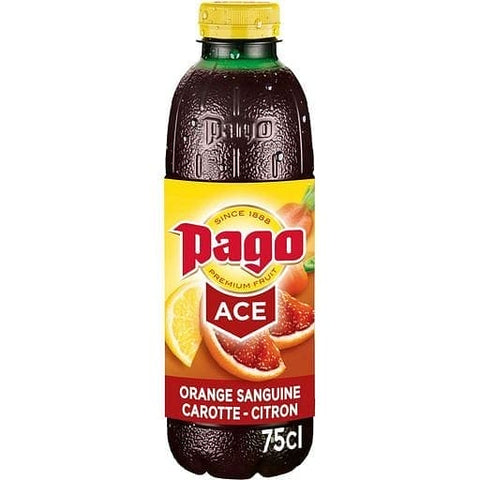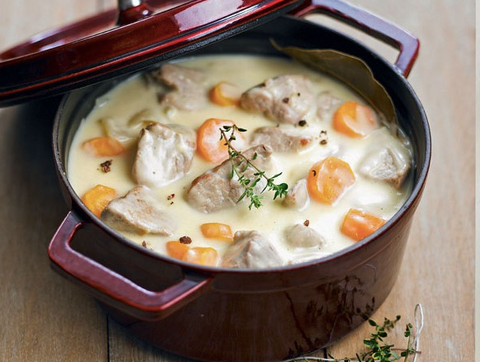Bayonne ham, or jambon de Bayonne, is a cured ham named after Bayonne, a historic port city in France's Basque and Gascon cultural regions. Bayonne ham is a dry-cured French ham that is highly prized. Because it, like its European siblings, has a Protected Geographical Indication (PGI) outlining exactly what can and cannot be called Bayonne Ham, one could think of this lovely French product as a relative of Italian Proscuitto di Parma and Spanish Jamón Ibérico. Bayonne ham, as well as other regional specialties, can be found in specialty butcher shops and supermarkets that sell imported French and Spanish cuisine, as well as directly from several manufacturers and importers. A charcuterie board should include Bayonne ham.
History
Journey to the heart of a peasant world
Before becoming a favorite dish of Marguerite de Navarre, Rabelais, the Good King Henri, and finally the Sun King, the roasting of the pig and ham was a crucial food resource for them. The South West's pig farming heritage is reflected in the history of the many local fairs and markets for pigs and piglets. The oldest markets in the Adour basin are Garlin, Tarbes, Lembeye, Soumoulou, Dax, Garris, Saint Palais, Rabastens, and Trie sur Base, which is known for its piglets. The famous pig sculptures on the porch of Sainte Marie d'Oloron cathedral in the Pyrénées-Atlantiques, which date from 1120, bear a testament to this pig mania. In the Saint Médard Romanesque church in Mont-de-Marsan, Landes, two pigs are painted on a low beam and a seventeenth-century door.
Journey to the land of salt
Salies-de-Bearn salt is stored in water 10 times saltier than saltwater deep beneath the Pyrenees, where it has been discovered naturally for millions of years. This salt is 100% natural, unusually rich in trace components, and has excellent flavor properties thanks to its authentic and ancient production method. The salt crystallizes and produces coarse grains when the hot water evaporates. The first crystallization yields a stunningly white and light salt flower that can be collected with a simple net dip. The petals then crystalize and fall to the bottom of the pan. There's no need to wash or treat this massive, extremely pure salt. The mineral water that remains after the rock salt has been removed is rich in trace elements. Salies-de-saltwater Béarn's has a good reputation.
Journey to the land of corn
Spanish conquistadors introduced maize from Peru's and Mexico's plains to replace panic and other cereals for raising poultry and pigs in the 16th century, believing it provided the hog a more sensitive and appetizing good meat, firm and abundant in fat.
Journey to the land of foehn or south wind
In the middle of steep terrain, the Spanish wind blows. Bayonne Ham has long been made in the Adour Basin, which is located at the mouth of the Adour River and the foot of the Pyrenees. The Adour basin runs from Tarbes to Bayonne, rising to 2,000 meters at the Tourmalet. The PGI Bayonne Ham's salting zone has developed naturally in the Adour Basin. The Foehn wind blows through the Adour basin, bringing pleasant, humid weather as well as drier days. Bayonne ham and Pyrenees cheese both originated in this region.
Journey In the silence of the drying room
In the ripening room, the Bayonne Hams slowly mature and release their aroma. The sharpened knife will chew away at the rind, revealing the tender, fragrant meat beneath. It will be delicate and salty, melting in your lips. There are a lot of scent promises that will remain a surprise until the much-anticipated tasting event.
Production
The Adour River basin is in question, and the Bayonne ham regulations have been updated to accommodate this geographic restriction. The meat must come from one of eight different pig breeds that are raised in a territory that stretches from Deux-Sèvres in the north to Aveyron and the Aude in the south. The pig's origin zone, the feeding regimen (no steroids, fish oils, or antibiotics), and the tattooing of each animal are all part of the strict guidelines. Transport, slaughter, original meat cut to size and weight, minimum fat cover, linoleic acid concentration, and post-slaughter meat storage temperature are all required. Bayonne ham, which is a ham made by these guidelines, has been granted PGI status by the European Union. The Consortium de Jambon du Bayonne is responsible for enforcing these restrictions and issuing licenses to use the Bayonne ham name. It's in Pau, Department 64's capital in southwest France.
-Drying Method
In modern times, the drying procedure is comparable to that of the past. Temperature and humidity controls are calibrated to reflect seasonal changes in each drying storage chamber. The pigs were originally slaughtered in late October or early November. After that, the hams were rubbed with salt from the Adour estuary's salt pans or those near Béarn. The first preserving procedure is perfect at this time of year, with temperatures ranging from 6 to 8 °C (43 to 46 °F), and the hams were left hanging in the drying room until the end of January or early February.
After that, the cut end of the joint is sealed with pannage, which is a pork fat and flour mixture. During the warmer months of March, April, and May, this reduces the rate at which the meat dries out. Many of the producers will rub a paste of piment d'Espelette (Basque chili pepper) into the skin at some stage throughout the process, giving the finished product a distinct tang.
By the end of July, the final drying cycle is complete, and the ham is ready to eat. The foehn (southerly wind) and the Atlantic Ocean provide seasonal temperatures and variable humidity levels every year, and current processes using individual drying chambers with temperature and humidity controls merely duplicate them. The ham used is usually between 8 and 9 kg (18 to 20 lb) in weight, including the bone.
The lauburu (traditional Basque cross), topped with the word Bayonne, is added after the ham has finished curing. Before being marketed, the ham must be at least 7 months old, with the majority being 9 or 10 months, and it can be stored for up to a year if kept in a cold (8 °C) and dry atmosphere. The ham is pleasantly sweet and beautifully seasoned, with a faint saltiness. When compared to cooked hams, it is usually cut very thinly and has a chewy feel.
The European Union granted Bayonne ham, as well as many other regional specialties, special protection in the 1990s. Only hams made in a specified place, with specific ingredients, and in a specific method are allowed to be called Bayonne hams under the law. This measure was made to maintain the Bayonne ham's tradition and to boost customer confidence by setting defined criteria that ensured customers were eating the real thing.

To Summarize
Salting, resting, drying, pannage, maturing, and probe testing are all crucial steps in the ham's production, according to the Consortium. To summarize, whole fresh hams are extensively salted before being placed in a salting tub. They're then dried in a soillarde (resting chamber) at low temperatures that resemble winter. Pannage, which comprises coating the ham's muscle structure with a mixture of lard and flour, seals in the taste. The ham is then matured to achieve a balanced, slightly salty flavor, a delicate scent, and a characteristic red/pinkish color. Professionals utilize a probe to assess and test the hams, similar to how vintners examine the fragrance and scent of their wines.
Visiting Bayonne
There's nothing quite like tasting a dish straight from the kitchen. After visiting the picturesque city named after it, our hunger for this French ham was piqued. Our visit to the French Basque area took place during our most recent pre-pandemic holiday to the larger portion of Basque Country, which is just across the Spanish border, and it holds a special place in our hearts. Bayonne, the Pays Basque capital, is situated at the junction of the Nive and Adour rivers. Shops, cafes, and magnificent 18th-century buildings adorn the narrow cobblestone streets. The Cathédrale Sainte-Marie de Bayonne, a beautiful Gothic cathedral in the city, is also worth visiting.
Typical residential architecture of Bayonne along the Nive River
Ham Museum in Bayonne
The stalls in the covered market, Place des Halles, will appeal to foodies. There is also a little ham museum in Bayonne. The Musee du Jambon de Bayonne educates tourists and educational groups about the ham's long history and specific production processes. Of course, most Bayonne restaurants, wine bars, and delicatessens carry the world-famous ham. Local producers gather every spring during Holy Week to commemorate the historic Ham Fair.
What is Bayonne Ham's 'ingredients'?
This ham was only given the PGI mark in 1998, despite having been around for over a thousand years. The only ingredients are fresh ham and spring salt evaporated from the small hamlet of Salies-de-Béarn, which is nestled between the Pyrenees Mountains and the Atlantic Ocean. Salies-de-Béarn is known as the "city of salt" because of its Baroque architecture and half-timbered structures. It even boasts a salt museum, which chronicles the story of its "white gold," as well as an annual cured food festival in September.
Drying the ham requires fresh air, wind, and a tincture of time, with an average ripening time of 9-12 months (but requiring a minimum of nine). The rind of the ham is etched with a Basque cross, the Basque people's emblem of togetherness, to confirm its authenticity. The Bayonne Ham Consortium, which encompasses 800 farms and 18 producer associations, is responsible for ensuring its quality.
Enjoying Bayonne Ham: Let me count the ways
The ham has a delicate flavor with hazelnut undertones and is usually cut extremely thinly like its cousins. It's a very versatile beef cut! It's delicious by itself, but it's also a fantastic addition to any cheese platter, especially when combined with an aperitif. It's also delicious on sandwiches, salads, and other ready-to-eat foods. It can be used in place of bacon for breakfast.
Cordon Bleu with Bayonne Ham
Cordon Bleu, or "blue ribbon," is a classic Basque meal prepared of breaded and fried beef wrapped in cheese.
Ingredients
- 4 cutlets of turkey
- 4 slices of Bayonne ham
- Emmental cheese, grated (25g)
- 25g in weight Ossau grated Iraty
- 1 egg
- All-purpose flour (40 g)
- Crumbs of bread (100 grams)
- 1 tablespoon dry oregano
Instructions
- Top each turkey cutlet with a piece of Bayonne ham. (If you like, you can use chicken or veal.)
- Mix the grated Ossau Iraty and Emmental cheeses in a mixing bowl.
- Top each cutlet with a little amount of shredded cheese.
- Fold up the cutlet's longest edge to fold it in half.
- On a deep plate, whisk one egg. Place the flour on a separate plate.
- Toss the bread crumbs with the dry oregano on a third plate.
- In the sequence listed, dredge each cutlet in flour, egg, and breadcrumbs.
- Cook for 5 minutes on each side in a skillet with a drizzle of olive oil before serving.
The Prosciutto di San Daniele and Parma hams from Italy, as well as the Jamon Serranoabugo and Jamon Pata Negra hams from Spain are well-known air-dried hams used in gourmet banquets.
The highest possible suggestion! If you want to take things a step further, go to "la Foire au Jambon," a Basque festival held every Easter in Bayonne's ancient city. This local event has a "ham market" as well as an annual regional competition to determine the greatest maker of traditional Bayonne ham. During the famed and colorful Bayonne Feasts (known in Spanish as Ferias) in August, however, you may sample and purchase a variety of French hams!




